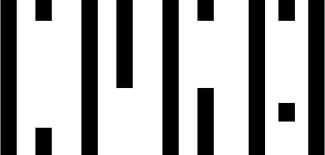-
Galerie Peter Kilchmann is delighted to present Valérie Favre’s (1959, Switzerland; lives and works between Berlin and Neuchâtel) new solo exhibition, Un billet pour quatre pièces, marking her inaugural presentation at the gallery’s Paris location and her fifth exhibition with the gallery. For this exhibition, the artist has continued several of her recognizable series, bringing them into dialogue with new, previously unpublished works. Across the gallery’s four rooms, approximately twenty works are presented in various formats: paintings and works on paper, which are interconnected in ways that are at once unexpected and yet intuitively coherent.
-
-
The title initially evokes Favre’s intimate connections with theatre and literature. At the same time, it hints at how she – as a passionate reader – plays with words. A lively, buoyant title, it suggests that she approaches painting with the same playful spirit. Un billet pour quatre pièces (A Ticket for four pieces/rooms) is an invitation to a performance and to dialogue, for no work exists without an audience. By conjuring new Lapine(s) Univers while simultaneously presenting two Petit(s) Théâtre(s) de la Vie – on canvas for the first time – she seeks to reconnect with a sphere in which she lived for nearly twenty years (1982–1999). At the same time, the artist creates the conditions for these figures to encounter other hybrid beings, which unfold within stage-like settings or like stellar constellations.
-
-

-
The work La cuillère (“Spoon”) brings together several of Favre’s iconic investigations. The boat assumes a central position in the composition, as in her series Le Bateau des Poètes—a homage to writers who glide from one shore to the other. The piece is inspired by an ancient Egyptian ritual in which deceased pharaohs were offered a spoonful of honey after embalming, to grant them strength and courage for their final journey. The nectar, in Greek mythology the food of the gods, here is presented by a dog, who—like a human—sits at the edge of a camp. This, of course, recalls the notion of “becoming-animal” (G. Deleuze), which Favre regularly explores. A whole bestiary invites the painter and makes tangible that the modes of existence of her protagonists are in no way determined by fate. Often captured in a moment of metamorphosis, her figures carry multiple potentials, incarnating themselves through the ongoing process of painting. Nothing is tamed in this work; for Favre, the beginning or end of time can only be rendered in a kind of ecstasy of matter. One thinks of Pygmalion—what literature-inspired artist would not claim similar intentions—and one delights in the fact that he dips his hands into the clay to enable her birth. Favre, in turn, immerses herself decisively in color; she experiments with openness, allowing the surface to vanish beneath the richness of layers—beneath the multitude of worlds. The audience is left with nothing but to approach her work almost like archaeologists, uncovering layer by layer a fractured sky of infinite colors, stars, and destinies.
-

-
Favre evokes another form of transition and myth in Métamorphose, devenir étoile, while still drawing inspiration from Ovid’s Metamorphoses. Here, the transformation is no longer horizontal but vertical, as it depicts Callisto being elevated to the heavens by Jupiter. Hera, the jealous goddess, turns Diana’s nymph into a bear after discovering her husband’s infidelity. The divine lover barely manages to resolve the tragedy he himself has provoked—an occurrence familiar throughout myth. The mountains and the intense, vivid, almost biting hues in the background allude to the artist’s Helvetian origins.This moment of metamorphosis, that fleeting instant of transition from one state to another, is celebrated by the painter as an explosion of energy—a veritable fireworks display. The nature of her protagonists, as so often, remains fluid; it is precisely from this suspension that they draw a cosmic, radiant vitality.
-
Even the glasses in the still lifes D’or et d’argent appear to hold a promise. In these new paintings, the vessels encounter the viewer as actors. This is less an academic exercise than a political manifesto. Sometimes filled, sometimes empty, with the loaf of bread positioned before or behind them, this modest, discreet pair of water and bread—essential sustenance—means more to the artist than gold or silver. This sense of calm is further enhanced by the grey or blue background and the decor reduced to its essentials. In this way, the viewer is presented—with a touch of nostalgia—with the image of a breakfast, lunch, or dinner table: a natural, comforting table, entirely in keeping with the ethos of her work.
-

Galerie Peter Kilchmann
11-13 rue des Arquebusiers, Paris
, 8 November - 19 December 2025Be the first to know updates about Galerie Peter Kilchmann
* denotes required fields
We will process the personal data you have supplied to communicate with you in accordance with our Privacy Policy. You can unsubscribe or change your preferences at any time by clicking the link in our emails.



















